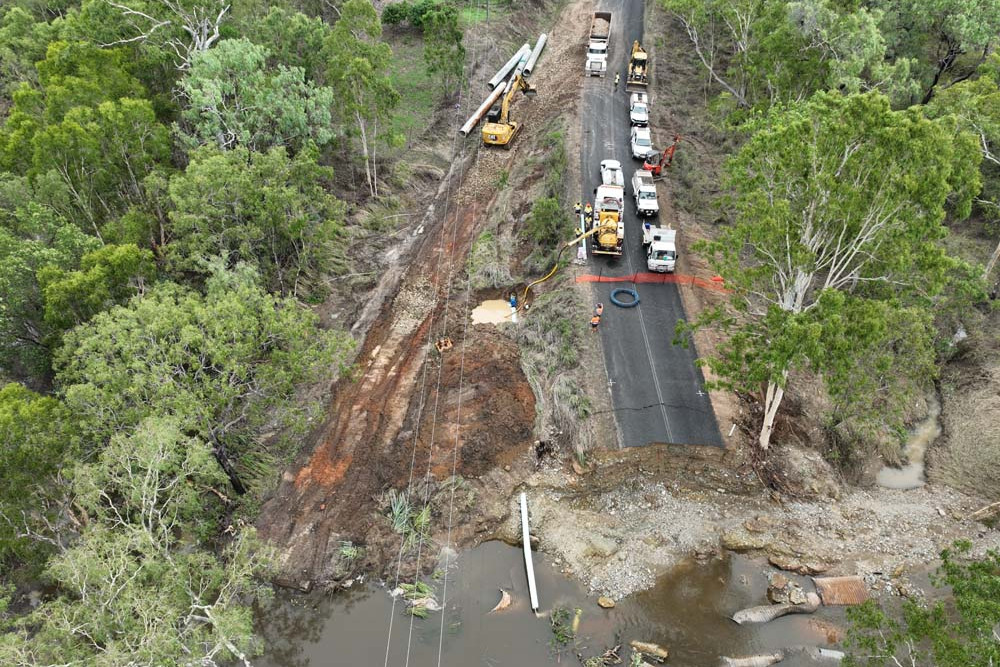General News
17 October, 2024
Roads red tape disaster
KEEPING up with road repairs following the impacts of natural disasters or general wear and tear had become a frustrating cycle of red tape for local government, according to Mareeba councillors.

A key example was the seemingly scattergun approach to patching James St, which had regularly been at the centre of local complaints, Cr Lenore Wyatt told a council meeting recently.
“I know what the problem is, but the community really needs to know – we need a communication plan.”
Councillors heard the current James St repairs were as a result of the damage caused by weather events in early 2023 and for which funding had only recently been approved by the State and Federal government disaster relief funding.
However, new impacts made by Cyclone Jasper in December were not being treated, as funding was not yet processed.
State and Federal Governments provide disaster relief funding (a 20% to 80% split respectively). This means the local community, through its Council, does not have to foot the bill. However, the process to get this funding is complex and takes time.
Mayor Angela Toppin said the delays left people perplexed at the way repairs were being carried out.
“What the ordinary person on the street can’t understand is why you’re doing that pothole and not that bigger one down there,” she said.
“But we can’t move the money across from one event to the next. If we do any work which hasn’t been approved for funding, we have to pay for it. Well, the community has to make up the costs.”
Council’s chief executive officer Peter Franks explained the steps to getting funding for road repairs that cause this lag. After an event, there was a 90-day period for “emergent works,” which essentially is to provide access back to the community.
Following this, a full report has to be submitted to the Qld Reconstruction Authority (QRA), detailing the extent of the damage, with supporting before and after photos, and an estimate on the costs of repairs.
“This takes a few months to prepare, we send it on to QRA, they then go through it and make sure it is appropriate,” he said.
“Once they’re happy with it, they send it to the Federal Government. They review it, and when agreed on, council is given the go-ahead to proceed.
“We then have to go out to tender, and that process takes a couple of months, then the tenders have to be evaluated and then be put to council to award the contract. Once council has approved it, the QRA must then approve it,” Mr Franks continued.
“If you look at that timeframe from the start of the event to the end of the “emergent works” period, to the time we get approval to do the full restoration and appoint a tenderer, you’re back to the next wet season.
“And our region is hampered by the wet, we can only effectively work in the dry.
“So that’s exactly what’s happening in James St. It got hammered in early 2023, but it also got hammered in December. We have to go back to QRA and outline the new damage, or the re-damaged sections, but we’ve only got approval for the early 2023 damage.”
Another frustrating component of funding raised in council was illustrated by the approaches to the Gamboola Bridge.
Replacement of the old crossing, about 140km west of Chillagoe, was initially assessed within the “like for like” stipulations for funding.
“So, if you have a six-metre road, you only replace it with a six-metre road. You can’t have an eight-metre road. That said, however, the replacement must meet all current legislative requirements,” Mr Franks said.
This stipulation caused delayed approvals for a couple of years before the crossing was finally replaced with an upgraded bridge, at a costly $16 million. The improvement was based on the Department of Agriculture and Fisheries’ findings that the old crossing was non-compliant because it did not allow for the passage of fish up and down the Mitchell River.
The approaches to the bridge were now the issue before council. Made up of dirt and gravel, the approaches were washed out in early 2023.
Council requested state funding to replace them with concrete approaches, or at the least, with more rock in the base, but this was rejected under the “like for like” assessment.
After Cyclone Jasper, another request was made this year, but council was told last month that this had also been knocked back.
A frustrated Cr Kevin Davies said the cycle would continue with every flood event.
“So next big flood will wash away the approaches, and we’ll have to go back and say we need to reinstate, and they’ll say, ‘well put it back the way it was’ again,” he said.
“We will have this beautiful fancy bridge in the middle of nowhere and after the annual flooding of the Mitchell, no one will be able to access it until we can get some ‘betterment’ funding to upgrade the approaches.”


